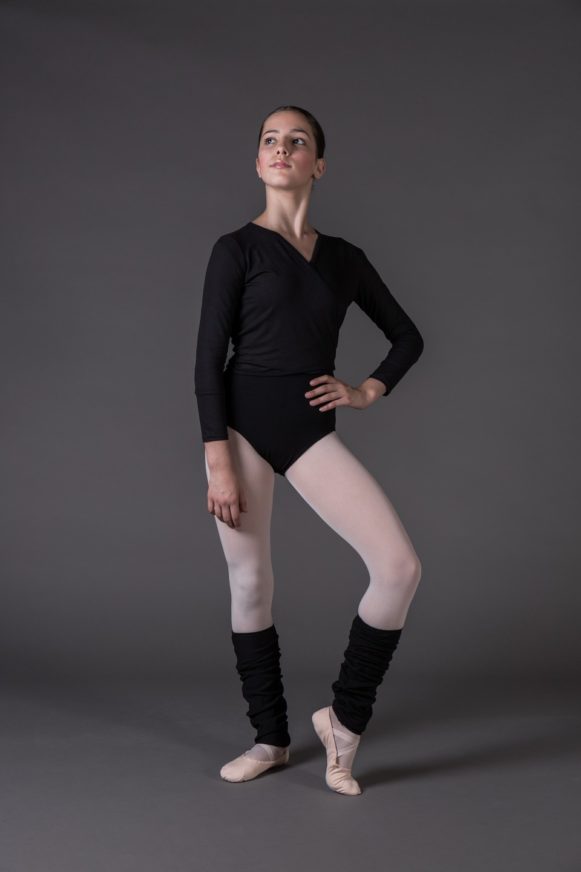How to dress for dance warm-up
Even for the warm-up phase, it is possible to suggest the use of some technical clothing.
Wearing theese clothing will facilitate the dancer in achieving the intended result.
In fact, this phase is preparatory and essential to prevent small and large muscle injuries during training.
A proper warm-up also ensures proper muscle tone and flexibility during the exercises.
There are warm-up clothing solutions for the different body areas involved, which we indicate below.
How to dress for warm-up: Bust
First of all, over the dancewear t it is always useful to wear a wrap sweater made of wool or warm cotton.
The wrap sweater has both the function of warming the bust and containing the heat during warming.
The choice between wool or warm cotton fabric often depends on the weather conditions in which you warm up.
The use of wool in direct contact with the skin is not recommended in case of hypersensitivity to this specific fabric.
For functional needs it is important to use a wrap sweater that is as close as possible to the dance leotard we wear.
This solution is important also from an aesthetic point of view.
How to dress for warm-up: Legs and Feet
As for how to dress for leg warm-ups, it is essential to use so-called leg warmers over pantyhose.
Depending on your needs, leg warmers can be short or long and always as close as possible to the pantyhose or leggings.
The foot is kept warm by wearing soft booties called toe warmers until it is time for barre exercises or toe climbing.
Note that students often replace wrap sweater and legwarmers with comfortable full-body suits or dance unitards made of warm cotton.
CURIOSITY ….
In recent years dance clothing manufacturers replace the wool using fabrics such as warm cotton or fleece.
Theese fabrics provide the same standards of fit and thermoregulation but with less dermatological discomfort.
